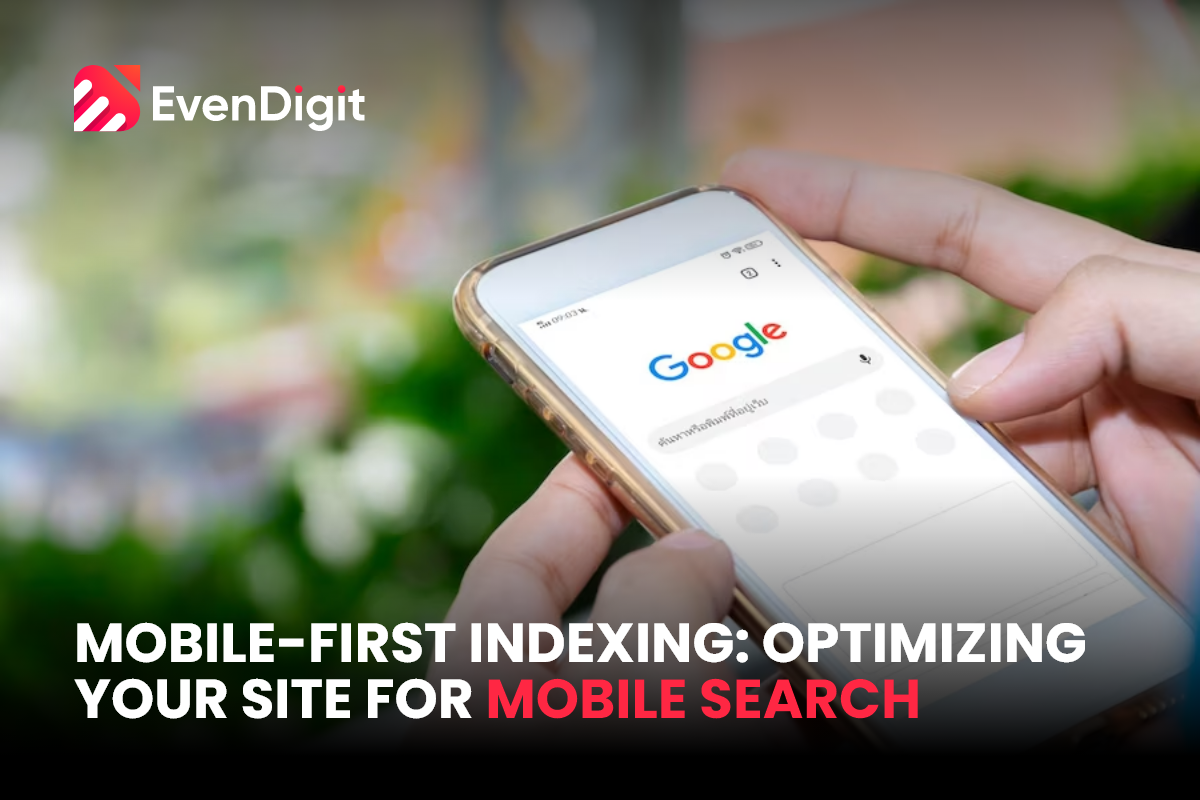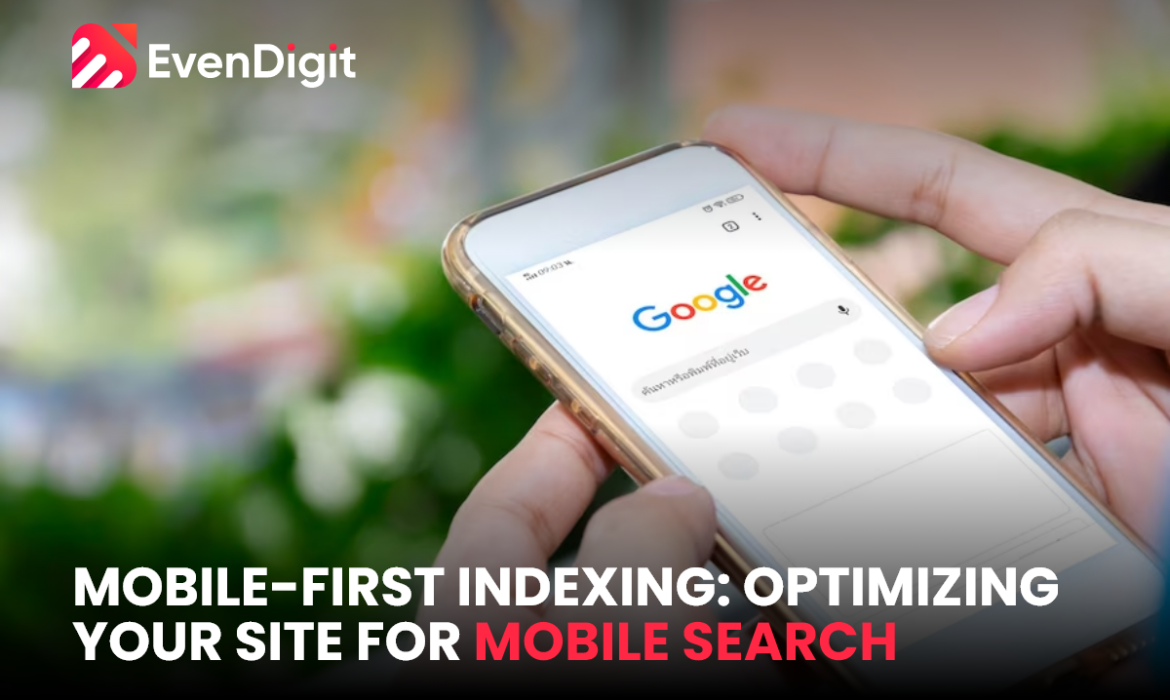
In today’s digital landscape, mobile devices have become an integral part of our lives. With more and more people accessing the internet through their smartphones and tablets, it is crucial for businesses to optimize their websites for mobile search. One of the key aspects of mobile optimization is mobile-first indexing. In this comprehensive guide, I will take you through the process of unlocking the power of mobile-first indexing and optimizing your website for mobile search.
What is mobile-first indexing?
Mobile-first indexing is a process where search engines primarily use the mobile version of a website’s content to rank and index pages. In the past, search engines would primarily crawl and index the desktop version of a website. However, with the majority of internet users now accessing websites through mobile devices, search engines have shifted their focus to mobile-first indexing.
In early 2023, 58.33% of all global web traffic was attributed to mobile devices, excluding tablets. This data highlights mobile-optimized platforms’ undeniable dominance and essential role in our current digital age.
By prioritizing the mobile version of a website, search engines can provide users with a better experience by delivering content that is optimized for the device they are using. This shift is in line with the increasing trend of mobile usage and ensures that websites are optimized for the growing number of mobile users.
The importance of mobile-first indexing for your website
Mobile-first indexing is more than just a trend; it is a necessity for businesses that want to succeed online. With the majority of internet users accessing websites through their mobile devices, it is crucial to optimize your website for mobile search.
There are several reasons why mobile-first indexing is important for your website. Firstly, it improves user experience. Mobile-friendly websites load faster, have a responsive design, and provide a seamless browsing experience. This leads to higher engagement, lower bounce rates, and increased conversions.
Secondly, mobile-first indexing impacts your website’s search engine rankings. Search engines prioritize mobile-friendly websites in their search results, giving them a higher chance of appearing at the top of the page. By optimizing your website for mobile search, you can improve your visibility and attract more organic traffic.
How to optimize your website for mobile search
Now that we understand the importance of mobile-first indexing, let’s dive into the step-by-step process of optimizing your website for mobile search.
Step 1: Mobile-friendly design and responsive web design
The first step in optimizing your website for mobile search is to ensure that it has a mobile-friendly design. This means that your website should be responsive and adapt to different screen sizes and orientations.
A responsive web design ensures that your website’s layout, images, and content adjust dynamically based on the device being used. This provides users with a seamless browsing experience, regardless of whether they are accessing your website from a desktop computer, smartphone, or tablet.
To achieve a mobile-friendly design, consider the following best practices:
- Use a responsive website template or theme.
- Optimize your images for mobile devices.
- Ensure that your text is easily readable on small screens.
- Use touch-friendly buttons and navigation elements.
- Test your website on multiple devices and screen sizes to ensure consistency.
By implementing these design principles, you can create a mobile-friendly website that provides a great user experience and improves your chances of ranking well in mobile search results.
Step 2: Page speed and loading time optimization for mobile
Page speed is a critical factor in mobile search rankings. Mobile users have shorter attention spans and expect websites to load quickly. If your website takes too long to load, users are more likely to abandon it and look for alternative options.
To optimize your website’s page speed for mobile, consider the following strategies:
- Minimize HTTP requests by reducing the number of files loaded.
- Optimize and compress your images to reduce file size.
- Enable browser caching to store static files locally.
- Minify your HTML, CSS, and JavaScript files to reduce their size.
- Use a content delivery network (CDN) to deliver your website’s content from servers closer to the user.
By implementing these page speed optimization techniques, you can provide a faster browsing experience for mobile users and improve your website’s mobile search rankings.
Step 3: Mobile-friendly content and readability
When optimizing your website for mobile search, it is essential to ensure that your content is mobile-friendly and easily readable on small screens. Mobile users have limited screen space, so it is crucial to present your content in a concise and engaging manner.
To optimize your content for mobile, consider the following tips:
- Use short paragraphs and bullet points to break up text.
- Use headings and subheadings to structure your content.
- Use larger font sizes for better readability.
- Avoid using complex tables or charts that may be difficult to view on mobile devices.
- Optimize your meta titles and descriptions for mobile search.
By optimizing your content for mobile, you can provide users with a better reading experience and improve your website’s mobile search rankings.
Step 4: Mobile-friendly navigation and user experience
Navigation plays a crucial role in the user experience of a mobile website. A well-designed navigation menu ensures that users can easily find the information they are looking for and navigate through your website seamlessly.
To optimize your website’s navigation and user experience for mobile, consider the following best practices:
- Use a simple and intuitive navigation menu.
- Limit the number of menu items to avoid overwhelming users.
- Include a search bar for easy access to specific content.
- Use breadcrumbs to provide users with clear navigation paths.
- Implement a “back to top” button for long-scrolling pages.
By optimizing your website’s navigation and user experience for mobile, you can improve user engagement and encourage users to spend more time exploring your website.
Step 5: Mobile SEO best practices
Optimizing your website for mobile search goes beyond design and user experience. It is essential to implement mobile SEO best practices to ensure that search engines can crawl and index your website effectively.
To optimize your website for mobile SEO, consider the following strategies:
- Use mobile-friendly URLs that are concise and descriptive.
- Implement structured data markup to provide additional context to search engines.
- Optimize your website’s meta tags, including titles and descriptions.
- Use relevant keywords in your content, headings, and image alt tags.
- Ensure that your website is accessible and compatible with different mobile browsers.
By implementing these mobile SEO best practices, you can improve your website’s visibility in mobile search results and attract more organic traffic.
Tools and resources for optimizing your website for mobile-first indexing
Optimizing your website for mobile-first indexing can be a complex process, but fortunately, there are several tools and resources available to help you along the way. Here are some of the top tools and resources you can use:
- Google’s Mobile-Friendly Test: This tool allows you to test your website’s mobile-friendliness and provides recommendations for improvement.
- PageSpeed Insights: This tool analyzes your website’s performance and provides suggestions for optimizing page speed on both desktop and mobile.
- Google Search Console: This free tool provides insights into your website’s search performance, including mobile usability issues and mobile-first indexing status.
- Responsive Design Testing Tools: These tools allow you to test your website’s responsiveness on different devices and screen sizes.
- Mobile SEO Guides and Blogs: There are numerous guides and blogs available online that provide in-depth information and best practices for optimizing your website for mobile-first indexing.
By utilizing these tools and resources, you can streamline the optimization process and ensure that your website is fully optimized for mobile search.
Mobile-first indexing FAQs
- What happens if my website is not optimized for mobile-first indexing?
If your website is not optimized for mobile-first indexing, it may experience lower search rankings, reduced organic traffic, and a poor user experience for mobile users. - Is mobile-first indexing applicable to all websites?
Mobile-first indexing is applicable to all websites, regardless of their industry or size. It is crucial for all businesses to optimize their websites for mobile search to stay competitive in today’s digital landscape. - Can I still rank well if my website is not mobile-friendly?
While it is still possible to rank well without a mobile-friendly website, the chances are significantly reduced. Mobile-friendly websites have a higher chance of ranking well in mobile search results and attracting organic traffic. - How often does Google update its mobile-first indexing algorithm?
Google updates its mobile-first indexing algorithm regularly to ensure that it reflects the evolving mobile landscape. It is essential to stay up to date with these algorithm updates and make the necessary optimizations to maintain your website’s visibility in mobile search. - Can I optimize my website for mobile-first indexing myself, or should I hire a professional?
While it is possible to optimize your website for mobile-first indexing yourself, it can be a complex process that requires technical expertise. Hiring a professional web developer or SEO expert can ensure that your website is fully optimized for mobile search.
Key Takeaways:
- Mobile Dominance: Over half of global web traffic in 2023 came from mobile devices, emphasizing the need for mobile-optimized sites.
- Shift to Mobile-First: Search engines now prioritize the mobile versions of websites for indexing, reflecting the change in user browsing habits.
- User Experience Matters: A mobile-optimized site offers a smoother browsing experience, leading to better user engagement.
- SEO Benefits: Mobile-friendly sites have a competitive edge in search engine rankings, attracting more organic traffic.
- Optimization Tools: Tools like Google’s Mobile-Friendly Test can guide your mobile optimization efforts.
- Stay Informed: Regular updates to search engine algorithms mean businesses should continuously monitor and adapt their mobile SEO strategies.
Now is the time to take action!
Optimize your website for mobile-first indexing. Don’t miss out on the opportunity to reach and engage with the growing number of mobile users. Start today and unlock the full potential of mobile search for your business.
Contact us today to discuss how we can help optimize your website for mobile-first indexing and improve your search engine rankings.
EvenDigit
EvenDigit is an award-winning Digital Marketing agency, a brand owned by Softude (formerly Systematix Infotech) – A CMMI Level 5 Company. Softude creates leading-edge digital transformation solutions to help domain-leading businesses and innovative startups deliver to excel.
We are a team of 70+ enthusiastic millennials who are experienced, result-driven, and hard-wired digital marketers, and that collectively makes us EvenDigit. Read More




